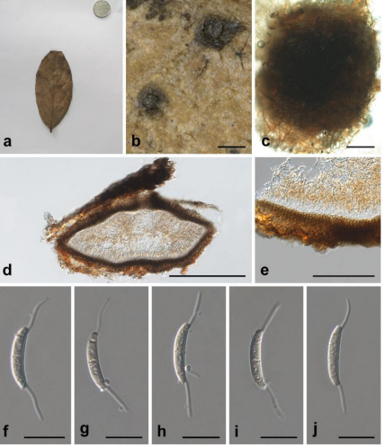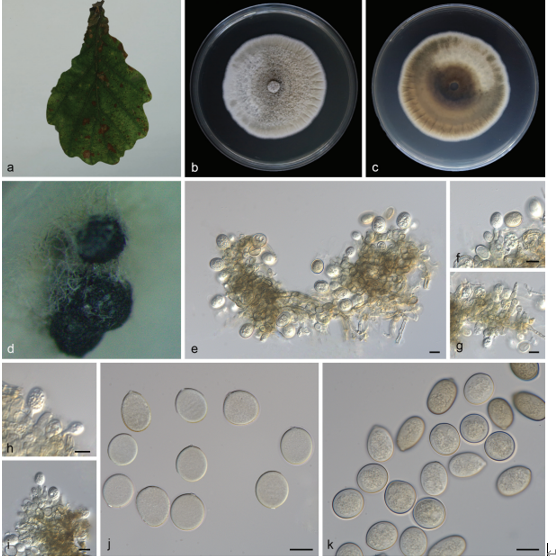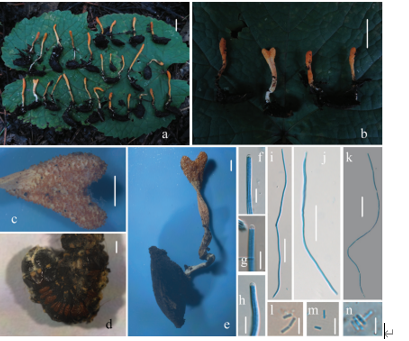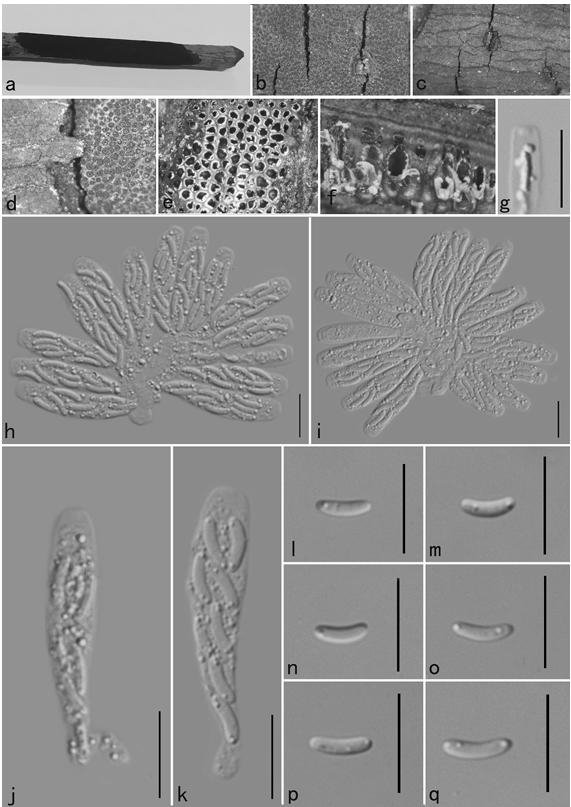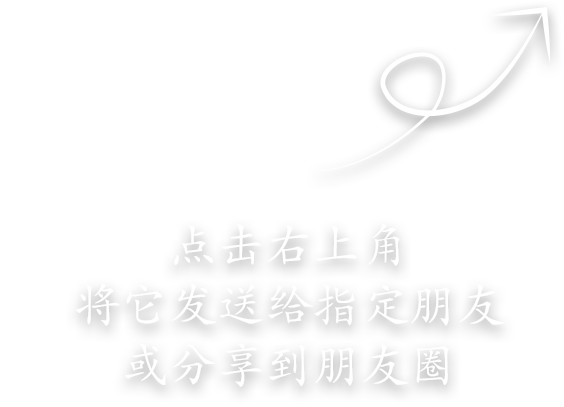Dictyosporella ellipsoidea W. Dong, H. Zhang & K.D. Hyde, sp. nov. 2021
MycoBank Index Fungorum number: IF558044; Facesoffungi number: FoF 09560
Holotype: MFLU 18-1209
Morphological description
Sexual morph:
Asexual morphs: Hyphomycetous. Colonies sporodochial, punctiform, gregarious or scattered, raised, black. Mycelium partly immersed, partly superficial on substratum, consisting of septate, thin-walled, hyaline hyphae. Conidiophores mostly absent or reduced to conidiogenous cells. Conidiogenous cells 5.5–12 × 3–4.5 μm (x= 8.5 × 3.7 μm, n = 5), holoblastic, monoblastic, integrated, determinate, terminal, subcylindrical, hyaline, smooth. Separating cells 8–15 × 6.5–12.5 μm,inflated cylindrical, wedge-shaped or irregular, hyaline, smooth, thin-walled. Conidia 30–46 × 17.5–28.5 μm (x= 36 × 22 μm, n = 35), acrogenous, solitary, dry, thin-walled, smooth-walled, ellipsoidal to broadly clavate, subglobose, or irregular-shaped, dictyoseptate, slightly constricted at septa, brown to dark brown, with a truncate base.
Cultures: On PDA, colony irregular, reaching 10 mm in 15 days at 25°C, dark grey from above, black from below, surface wrinkled, dry, with dense mycelium, raised, undulate at edge.
Habitat: : on submerged wood in a stream.
Distribution: China, Yunnan Province, Dehong City.
GenBank Accession: LSU = MW287758;Notes: In our phylogenetic analysis, our collection MFLUCC 18-1042 clusters in Junewangia with good bootstrap support (Fig. 1). However, MFLUCC 18-1042 morphologically belongs in Dictyosporella due to the sporodochial, punctiform colonies, dictyoseptate conidia with a separating cell and without macronematous conidiophores (Song et al. 2018a, Yuan et al. 2020). 51 Whereas, Junewangia is characterized by effuse, hairy colonies, macronematous, long conidiophores with slightly flaring collarette and percurrent proliferations, and oval to subspherical conidia with several oblique septa and a protuberant, truncate basal cell (Baker et al. 2002). Therefore, we identify our collection as a new species in Dictyosporella, namely D. ellipsoidea.
Dictyosporella ellipsoidea differs from other Dictyosporella asexual species, i.e. D. aquatica, D. hydei and D. guizhouensis, in having mostly ellipsoidal conidia with an inflated cylindrical, wedge-shaped or irregular separating cell.Reference: Dong W, Hyde KD, Jeewon R, Doilom M, Yu XD, Wang GN, Liu NG, Hu DM, Nalumpang S, Zhang H 2021 – Towards a natural classification of annulatascaceae-like taxa Ⅱ: introducing five new genera and eighteen new species from freshwater. Mycosphere 12(1), 1–88,
Doi 10.5943/mycosphere/12/1/1
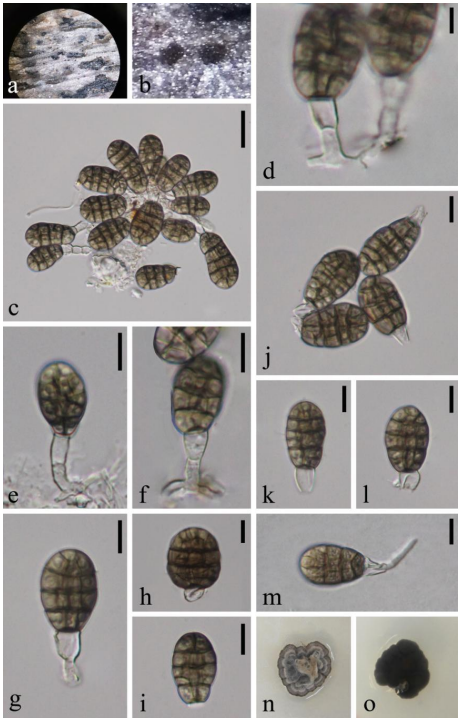
Dictyosporella ellipsoidea (MFLU 18-1209, holotype). a, b Colonies on submerged wood. c–f Conidiogenous cells with conidia. g–l Conidia. m Germinated conidium. n, o Colony on PDA (left-front, right-reverse). Scale bars: c = 20 μm, d = 5 μm, e–m = 10 μm.


